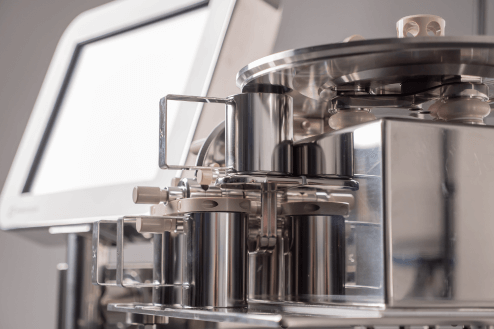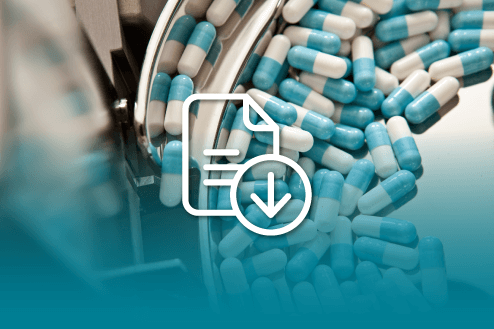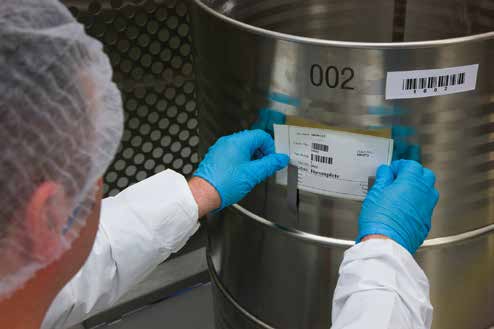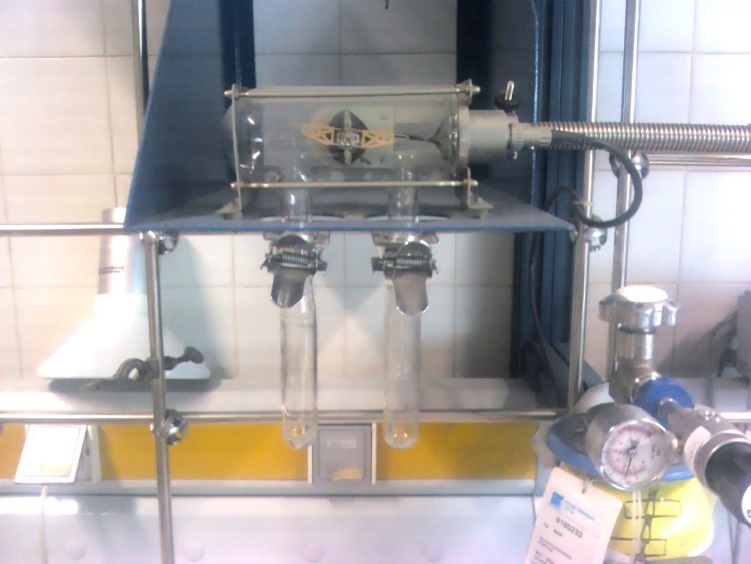 Back to news
Back to news
Adsorption Studies in Porous Materials at the University of Lisbon
The Faculty of Sciences of the University of Lisbon (FCUL) was created in 1911. It includes some internationally highly-ranked Research Centers and Institutes. Together with high-level research, its purpose is to give a strong foundation to students in areas of science such as Mathematics, Physics, Biology, Geology, Chemistry and Biochemistry, among other emergent areas of science. The team at the Department of Chemistry and Biochemistry, Departamento de Química e Bioquímica (DQB), has been using CI Microbalances for several decades in its work relating to the preparation and application of porous materials. Ana Cristina Fernandes, a PhD student in the DQB, is studying the adsorption and release of nitric oxide in clays. Her work has applications in the area of pharmaceutical research with regard to the development of new drug delivery systems. DQB offers training levels BSc (1st cycle), Master (2nd cycle) and PhD (3rd cycle). The department also holds courses not leading to an academic degree, whose content meets the practical needs of working professionals, a close interaction and sharing of material and human resources with the Units of Research and Development in the areas of Chemistry and Biochemistry, headquartered in FCUL. Ana Fernandes comments that the department has three microbalances and these are used by graduate and PhD students.“One of our microbalances has specifically been used to record the adsorption and desorption of nitric oxide (NO). Nitric oxide has an important regulatory role in the body. I work with porous materials, which can be used as support for nitric oxide.”She explains.
“I put my sample in the balance, which is connected to a vacuum system, then add NO and follow the increase of mass against time until constant values are reached. For the release, a vacuum is generated in the system and once again the decrease of mass is recorded.”The sample size is usually 50mg and the particle size can go from 100 nm up to 2µm, depending on the sample. These adsorption experiments have a time length of 72 hours, or until equilibrium is reached. The release can run up to 48 hours. The results are obtained using LabWeigh Software from CI Precision and are exported and analysed in Microsoft Excel. Some papers resulting from Ana Cristina Fernandes’ studies can be found on:
- J. Mater. Chem. B, 2013, 1, 3287, and
- New J. Chem., 2013, 37, 4052
“Because they are reliable and present a good cost/benefit ratio.”Commenting on the technical support from CI Precision, she says,
“Although CI has no specific representative in our country, support works well because they have visited our laboratory and are aware of our type of work, so they can respond correctly when we have questions.”Asked whether she would recommend CI Microbalance kits to others, Ana Fernandes replied,
“Yes, because they present a good cost/benefit ratio and, importantly, they allow you to obtain experimental results with good precision.”
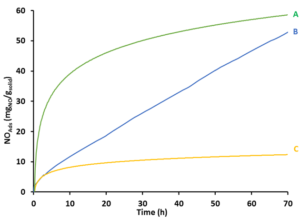 Curves of nitric oxide adsorption during time. A, B and C are selected nanoporous materials.
Curves of nitric oxide adsorption during time. A, B and C are selected nanoporous materials.
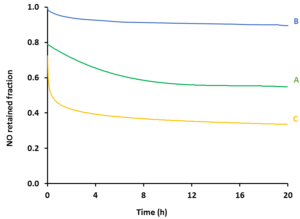 Curves of nitric oxide release during time. A, B and C are selected nanoporous materials.
For more information about Microbalance Kits and accessories from CI Precision, please telephone +44 1722 424100 email sales@ciprecision.com
Curves of nitric oxide release during time. A, B and C are selected nanoporous materials.
For more information about Microbalance Kits and accessories from CI Precision, please telephone +44 1722 424100 email sales@ciprecision.com
Download as PDF
Download PDF








